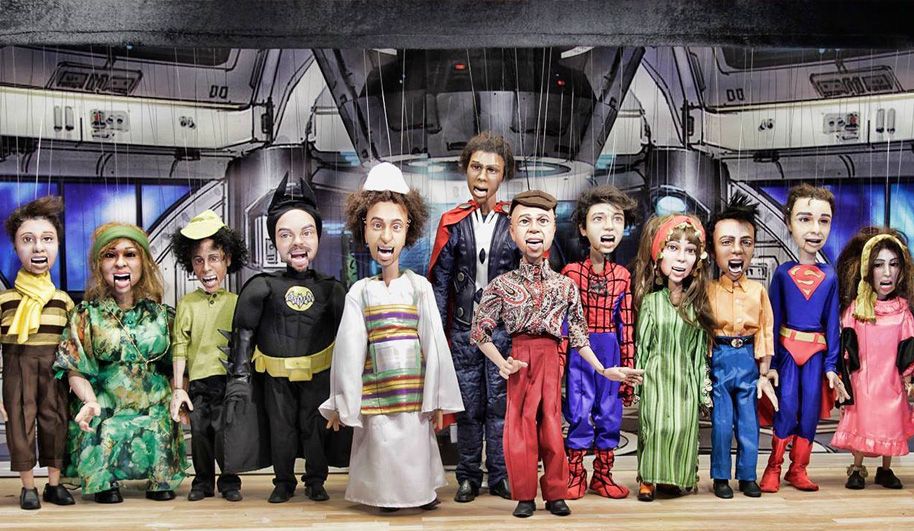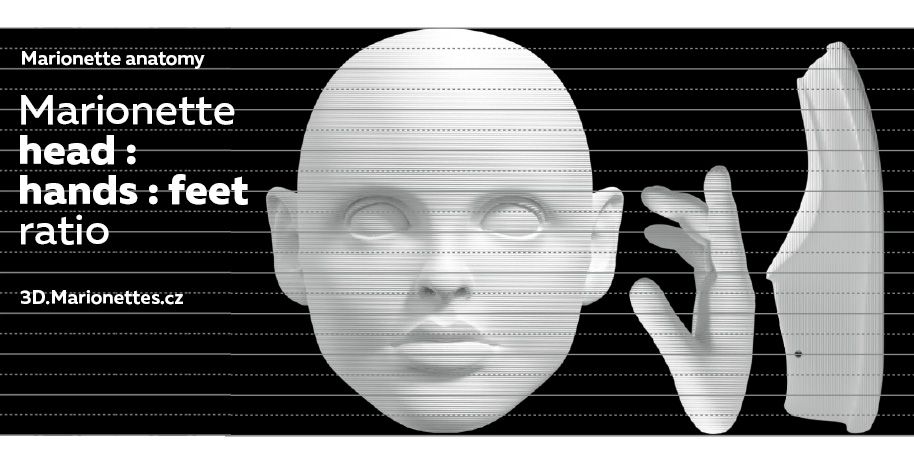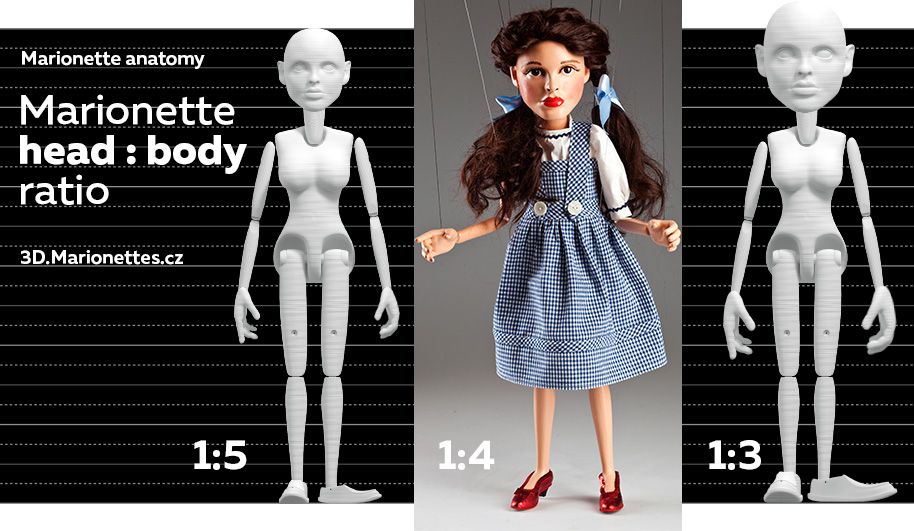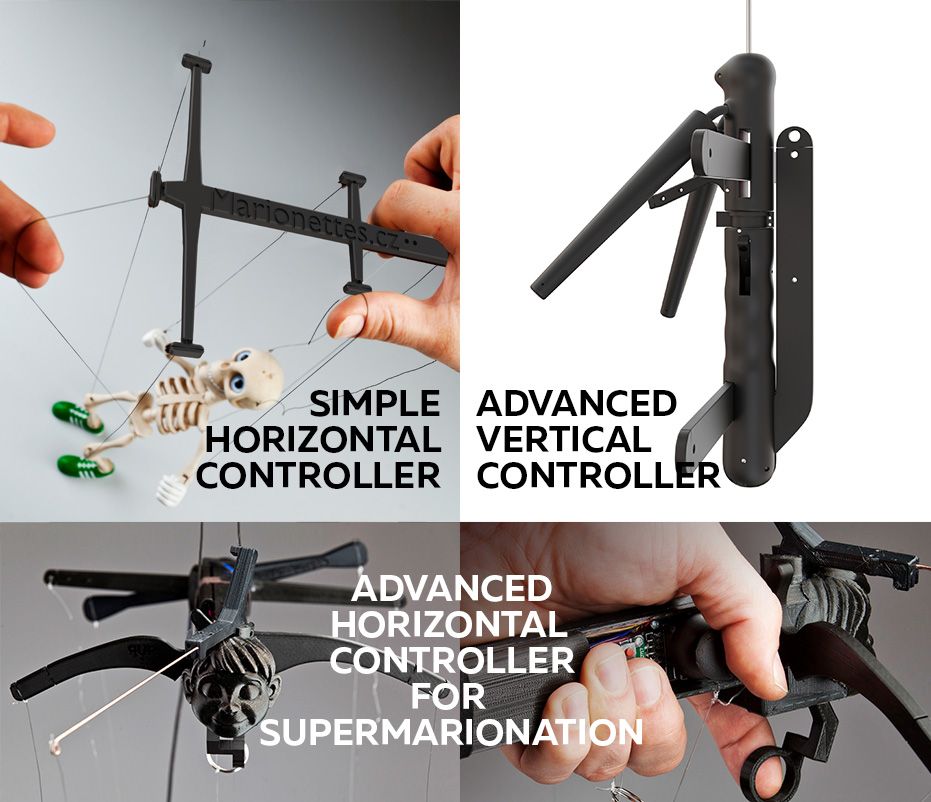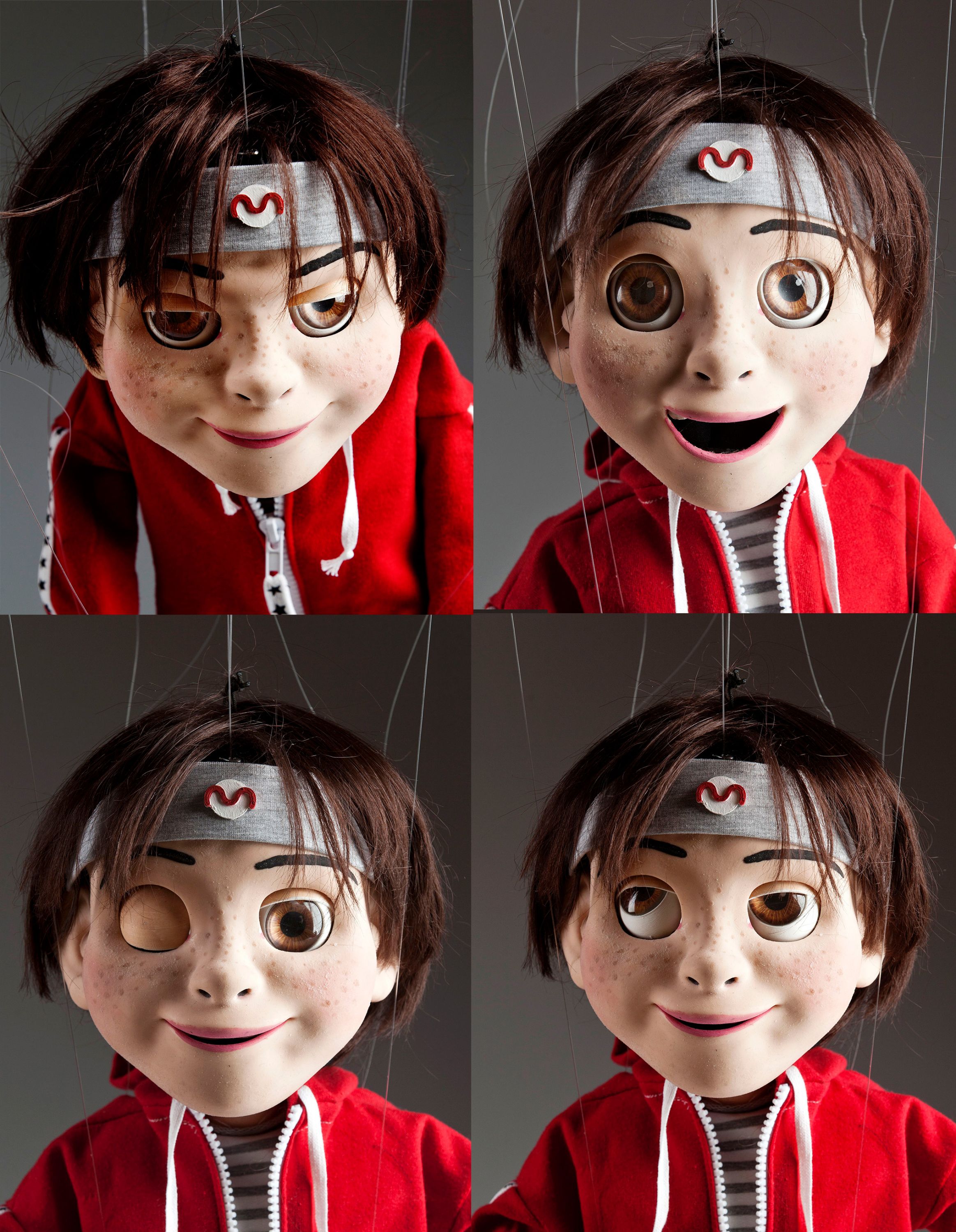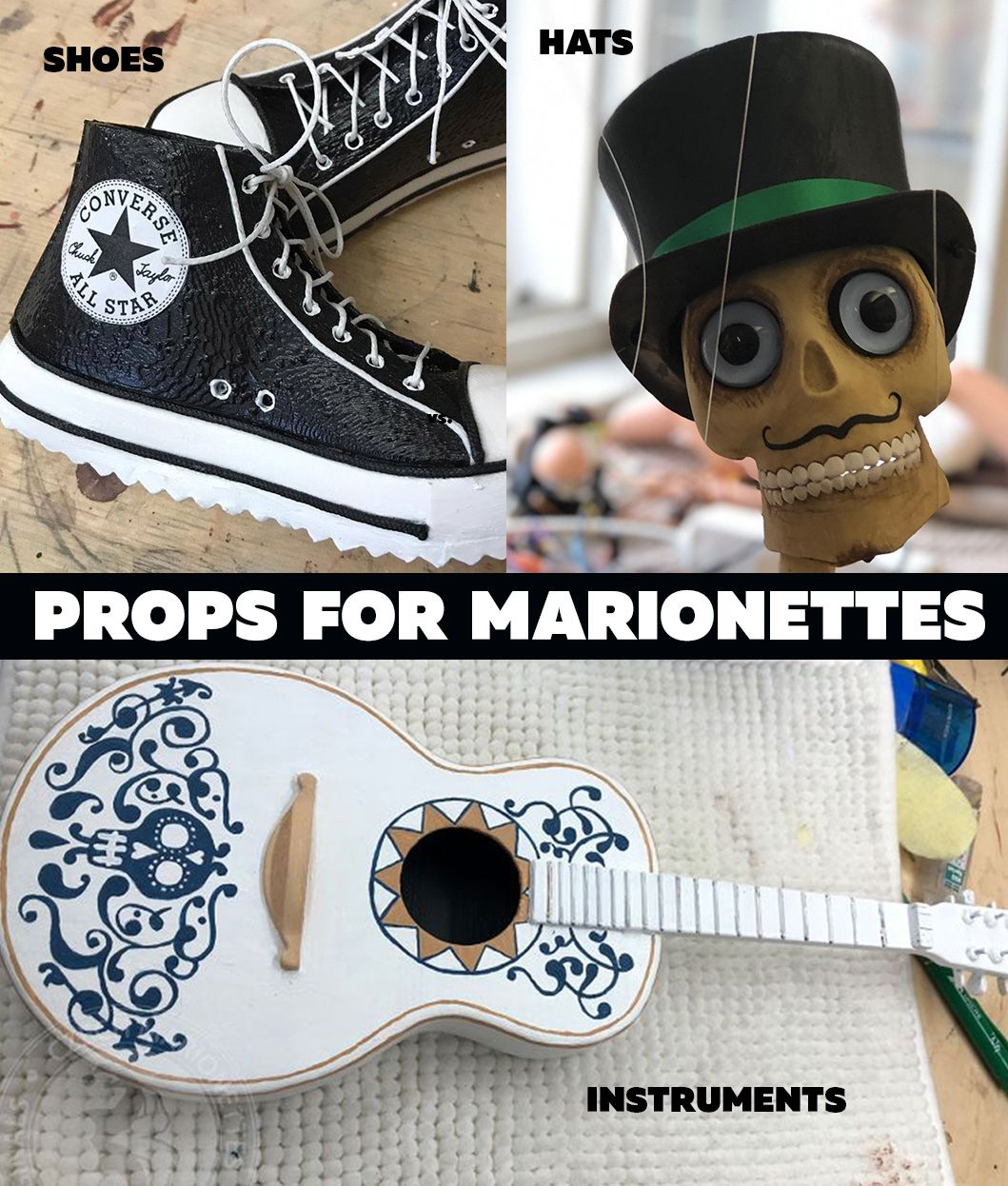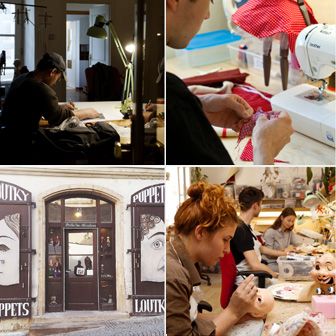Marionettes.cz
- Marionette
- Marionette per bambini e appassionati
La nostra pagina Marionette per bambini e appassionati offre una fantastica selezione di marionette fatte a mano, adatte sia ai principianti che ai burattinai esperti. Abbiamo classificato le marionette per facilitare la navigazione e aiutarti a trovare quella perfetta per te. Che tu stia cercando personaggi classici, animali o qualcosa di unico, queste marionette sono realizzate con cura nella Repubblica Ceca, unendo tradizione e qualità. Esplora la varietà e scopri una marionetta che catturerà il tuo cuore!
- Marionette Artistiche
Le Marionette d'arte sono la nostra migliore selezione di pupazzi che sono sia unici che speciali in ogni modo possibile. Ogni creazione è un'opera d'arte originale e dettagliata. Art Marionettes sarà un'aggiunta meravigliosa alla tua collezione e porterà gioia e bellezza nella tua casa. Statuette di una vita che invecchiano come il vino ...Per maggiore chiarezza li abbiamo ordinati in alcune categorie di seguito. Quindi guarda e divertiti :) Katerina Novakova
- Marionette da Spettacolo
Incontrali per strada, a una festa o sui social network come YouTube, Facebook, Instagram, TikTok, ecc. Sono pupazzi perfettamente funzionanti e non si stancano mai. Puoi scegliere dall'offerta che vedi qui, oppure puoi venire con la tua idea e faremo un burattino professionale per te. Saremmo lieti di incontrarvi personalmente al nostro seminario di corporazione a Praga.
- Personalizzata
Stiamo padroneggiando la tecnica dell'intaglio a mano e la moderna tecnica della stampa 3D.Utilizziamo materiali e tecniche di prima qualità.Siamo in grado di comunicare con te quotidianamente durante il progetto per trovare il miglior modo possibile per realizzare le tue idee.
- Pubblicazioni e voucher
Un'ampia gamma di riviste e pubblicazioni è dedicata all'arte delle marionette. Queste pubblicazioni coprono vari aspetti dell'arte, dalla storia delle marionette in Repubblica Ceca alle pratiche contemporanee. Disponibili sia in formato cartaceo che digitale, offrono approfondimenti dettagliati sull'artigianato, la tradizione e la narrazione che definiscono quest'arte. Questa collezione è perfetta per appassionati, collezionisti o chiunque desideri esplorare il mondo delle marionette.
- Esposizione di Biarritz
Marionettes.cz presenta una collezione contemporanea di marionette ceche Le nostre marionette hanno conquistato con successo il pubblico in Francia! Invitate alla prestigiosa esposizione di Biarritz, una pittoresca città sulla costa sud-occidentale, abbiamo presentato con orgoglio una splendida collezione contemporanea di marionette ceche. L’evento ha messo in mostra un’incredibile varietà di marionette, offrendo una gamma diversificata di tipologie, dimensioni e stili, fondendo magnificamente l’artigianato tradizionale con l’arte moderna. Questa straordinaria opportunità ci ha permesso di rappresentare una delle più antiche e preziose tradizioni ceche su un palcoscenico internazionale. Le nostre marionette hanno incantato professionisti e appassionati d’arte e cultura, confermando il fascino globale della cultura ceca. Il successo dell’esposizione testimonia la magia senza tempo del teatro delle marionette e la sua capacità di unire le persone attraverso la creatività e la tradizione. Siamo onorati di aver portato un pezzo del patrimonio ceco su una piattaforma così prestigiosa a Biarritz.
- Marionette per bambini e appassionati
- DIY Kit & Componenti
- Fallo da solo - KIT
Crea le tue marionette. Sei abile e lo sappiamo! Assembla un burattino da un set pre-preparato. Parti per fare burattini. Prodotto in Repubblica Ceca. Materiali sicuri. Giocattoli in legno. Prodotto ceco di qualità.
- Materiale per la costruzione di marionette
Siamo entusiasti di offrirti un'ampia gamma di materiali e accessori di alta qualità per realizzare le tue marionette! Che tu sia un professionista esperto o un hobbista alle prime armi, abbiamo tutto ciò di cui hai bisogno per dare vita alle tue marionette. La nostra selezione include legno di prima qualità, fili resistenti e durevoli, oltre a dettagliate componenti hardware, garantendo che le tue marionette siano funzionali e splendidamente fatte a mano. Ci impegniamo a offrirti prodotti che stimolino la tua creatività, assicurando al contempo che le tue creazioni siano costruite per durare. Qualunque sia il tuo progetto, siamo qui per supportarti in ogni fase!
- Supporti per marionette
I supporti per marionette sono fondamentali nel mondo delle marionette ceche, poiché sostengono queste bellissime creazioni sia per l’esposizione che per le performance. Di solito realizzati in legno, i supporti sono progettati per mantenere la marionetta in posizione verticale, evitare l’intreccio dei fili e garantire movimenti fluidi durante gli spettacoli. Inoltre, valorizzano le marionette come opere d’arte decorative, riflettendo l’artigianato e la tradizione delle marionette ceche. Sia in teatro che in una collezione, i supporti preservano e mettono in risalto il fascino di questi tesori culturali.
- Dispositivi di controllo per marionette
I nostri controller per marionette sono progettati per offrire una manipolazione precisa e senza sforzo, sia per principianti che per professionisti. Realizzati in legno e metallo di alta qualità, forniscono un eccellente equilibrio e controllo, rendendo le tue marionette più vive. Che tu voglia creare gesti sottili o movimenti complessi, la nostra gamma include dai semplici modelli a croce ai sistemi avanzati, ideali per qualsiasi livello di abilità. Con i nostri controller, potrai godere di movimenti fluidi e naturali che migliorano l'arte della marionetta.
- Corpi, teste, scarpe di marionette
Nella nostra pagina Corpi e teste, parti di marionette e scarpe, offriamo una varietà di componenti di alta qualità per creare o personalizzare le tue marionette. La nostra selezione comprende teste finemente lavorate, corpi completi e scarpe dettagliate, disponibili in diverse dimensioni e stili per adattarsi al carattere della tua marionetta. Che tu stia assemblando una nuova marionetta o dando un nuovo look a una esistente, questi pezzi garantiscono durata e dettagli artistici, facendo risaltare le tue creazioni.
- Fallo da solo - KIT
- Per la stampa 3D
- Marionette complete per la stampa 3D
Qui abbiamo il nostro database di burattini marionette animali pronti per la stampa con stampanti 3D. Possiamo anche personalizzare i file in base alle tue esigenze. La licenza per ogni file consente di stampare fino a 5 pezzi. Si prega di notare che il prezzo del tuo ordine include solo un file elettronico con il modello 3D (* .stl). La stampa della tua marionetta dipende da te :)Godere!
- Corpi per la stampa 3D
In questa categoria troverai una varietà di modelli 3D di corpi di marionette, pronti a costituire la base del tuo pupazzo. Da semplici strutture di base a modelli più dettagliati, questi file forniscono la struttura essenziale su cui puoi costruire il carattere, la personalità e il movimento. Sia che tu stia creando una marionetta tradizionale o sperimentando un tocco moderno, i nostri modelli ti offrono un solido punto di partenza. Tutti i file sono forniti in formato *.stl e preparati con cura per una stampa 3D e un assemblaggio semplici. Il tuo ordine include solo il file digitale: la stampa, la finitura e la realizzazione della tua marionetta sono nelle tue mani. Divertiti a modellare i tuoi pupazzi unici, partendo dal corpo!
- Teste per la stampa 3D
Qui abbiamo il nostro database di teste di marionette pronte per la stampa con stampanti 3D. Possiamo anche personalizzare i file in base alle tue esigenze. Tieni presente che il prezzo del tuo ordine include solo un file elettronico con il modello 3D (*.stl). La stampa della tua marionetta è a carico tuo :)Divertiti!
- Scarpe per la stampa 3D
Qui puoi esplorare la nostra collezione di modelli 3D di calzature e accessori per marionette, pronti a dare un tocco di dettaglio e carattere in più alle tue creazioni. Dalle casual Converse alle eleganti scarpe lucide o alle sportive sneakers da basket, troverai modelli adatti a una vasta gamma di personalità dei pupazzi. Ogni file è in formato *.stl, preparato per una stampa 3D fluida e una facile integrazione con i tuoi progetti di marionette. I modelli sono progettati con cura per bilanciare l'estetica con la praticità, rendendoli sia eleganti che funzionali. Se hai bisogno di qualcosa di speciale, possiamo anche creare disegni personalizzati per soddisfare la tua visione. Si prega di notare che l'acquisto fornisce solo il file digitale: la stampa e l'assemblaggio delle scarpe e degli accessori della tua marionetta dipendono da te.
- Mani per la stampa 3D
Scopri la nostra collezione di mani di marionette stampabili in 3D, progettate per dare personalità ed espressività ai tuoi pupazzi. Le mani sono un dettaglio essenziale nella creazione di pupazzi, sia che tu stia cercando un look teatrale classico, un personaggio giocoso o un design più realistico. Il nostro database offre modelli pronti per la stampa che puoi facilmente incorporare nei tuoi progetti di marionette, rendendo semplice aggiungere quel tocco finale di artigianalità. Tutti i file sono forniti in formato *.stl, preparati e ottimizzati per la stampa 3D. Ogni design è accuratamente modellato per garantire equilibrio, proporzione e facilità d'uso nell'assemblaggio. Se stai cercando qualcosa di speciale, possiamo anche personalizzare le mani in base alla tua visione. Ti preghiamo di notare che il tuo acquisto include solo il file digitale: la stampa e la finitura della tua marionetta sono una parte creativa che lasciamo a te. Divertiti a dare vita al tuo pupazzo!
- Dispositivi di controllo e meccanismi oculari per la stampa 3D
In questa categoria troverai una raccolta di file stampabili in 3D dedicati ai controller per marionette e ai meccanismi oculari. Questi componenti essenziali danno vita ai tuoi pupazzi: i controller ti consentono di ottenere movimenti e espressioni precisi, mentre i meccanismi oculari aggiungono un affascinante tocco di realismo e carattere. Che siate burattinai, hobbisti o creatori professionisti, i nostri progetti sono pronti per essere scaricati e stampati, rendendo più facile che mai costruire o personalizzare la vostra marionetta. Tutti i file sono forniti nel formato standard *.stl e ottimizzati per la stampa 3D. Ogni progetto è stato accuratamente preparato per bilanciare funzionalità e facilità di assemblaggio, in modo che tu possa concentrarti sulla parte creativa della realizzazione dei tuoi pupazzi. Offriamo anche la personalizzazione dei modelli in base alle tue esigenze specifiche. Tieni presente che il tuo acquisto include solo il file digitale: la stampa e l'assemblaggio dei pezzi del tuo pupazzo fanno parte del tuo percorso creativo.
- Oggetti di scena per la stampa 3D
In questa categoria troverai una serie di oggetti di scena diversi nei modelli 3D. Ora puoi stampare oggetti di scena di chitarra, pianoforte e altri strumenti musicali su una stampante 3D.
- Marionette complete per la stampa 3D
- Marionette Antiche
- Corsi
- Scultura di marionette
Trasforma il legno in un burattino secondo la tua immaginazione. Sono la nostra fantasia e la nostra energia a trasformare un pezzo di legno in un burattino. Il legno ha una propria struttura, che guida il nostro scalpello. Se siamo attenti e aperti all’improvvisazione, anche un taglio casuale può ispirarci su dove andare dopo nella ricerca della sua forma ed espressione. Poi, attraverso di esso, possiamo raccontare storie...
- Terapia con le marionette
Ti spiegheremo come usare le marionette come strumento terapeutico efficace. Scopri come stiamo sviluppando una metodologia per insegnare questo fenomeno. Unisciti al progetto globale e scopri i corsi che offriamo.
- Costruzione di marionette
Impara ad assemblare e decorare la tua marionetta di legno sotto la guida dei nostri burattinai e insegnanti esperti. Puoi scegliere tra corsi semplici o più avanzati. Prova la gioia di costruire la tua marionetta. Collega bellezza e funzione. Realtà e immaginazione. Materia e spirito. Burattinaio e burattinaio. I vecchi burattinai dicevano sempre "Una marionetta deve essere fatta per essere bella e per interpretare se stessa", e aggiungerei solo che questo è un compito pieno di molti mestieri. Petr Puppeteer Senior Puppet Technologist – PUP
- Animazione di marionette
Qui troverai corsi sulle regole e le tecniche per liberare la tua espressione creativa con le marionette. Una marionetta è come uno scudo dietro cui nascondersi, dandoti la libertà di dire e fare tutto ciò che senti e desideri. Ti insegneremo la tecnica per operare e animare le marionette.
- Scultura di marionette
- Saldi
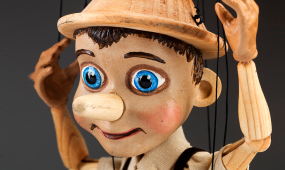 La nostra pagina Marionette per bambini e appassionati offre una fantastica selezione di marionette fatte a mano, adatte sia ai principianti che ai burattinai esperti. Abbiamo classificato le marionette per facilitare la navigazione e aiutarti a trovare quella perfetta per te. Che tu stia cercando personaggi classici, animali o qualcosa di unico, queste marionette sono realizzate con cura nella Repubblica Ceca, unendo tradizione e qualità. Esplora la varietà e scopri una marionetta che catturerà il tuo cuore!
La nostra pagina Marionette per bambini e appassionati offre una fantastica selezione di marionette fatte a mano, adatte sia ai principianti che ai burattinai esperti. Abbiamo classificato le marionette per facilitare la navigazione e aiutarti a trovare quella perfetta per te. Che tu stia cercando personaggi classici, animali o qualcosa di unico, queste marionette sono realizzate con cura nella Repubblica Ceca, unendo tradizione e qualità. Esplora la varietà e scopri una marionetta che catturerà il tuo cuore!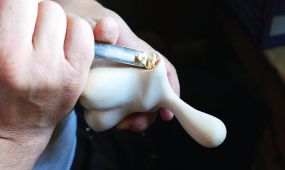 Le Marionette d'arte sono la nostra migliore selezione di pupazzi che sono sia unici che speciali in ogni modo possibile. Ogni creazione è un'opera d'arte originale e dettagliata. Art Marionettes sarà un'aggiunta meravigliosa alla tua collezione e porterà gioia e bellezza nella tua casa. Statuette di una vita che invecchiano come il vino ...Per maggiore chiarezza li abbiamo ordinati in alcune categorie di seguito. Quindi guarda e divertiti :)
Katerina Novakova
Le Marionette d'arte sono la nostra migliore selezione di pupazzi che sono sia unici che speciali in ogni modo possibile. Ogni creazione è un'opera d'arte originale e dettagliata. Art Marionettes sarà un'aggiunta meravigliosa alla tua collezione e porterà gioia e bellezza nella tua casa. Statuette di una vita che invecchiano come il vino ...Per maggiore chiarezza li abbiamo ordinati in alcune categorie di seguito. Quindi guarda e divertiti :)
Katerina Novakova
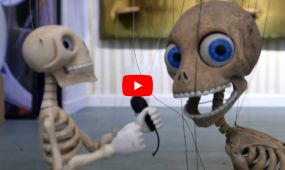 Incontrali per strada, a una festa o sui social network come YouTube, Facebook, Instagram, TikTok, ecc. Sono pupazzi perfettamente funzionanti e non si stancano mai. Puoi scegliere dall'offerta che vedi qui, oppure puoi venire con la tua idea e faremo un burattino professionale per te.
Saremmo lieti di incontrarvi personalmente al nostro seminario di corporazione a Praga.
Incontrali per strada, a una festa o sui social network come YouTube, Facebook, Instagram, TikTok, ecc. Sono pupazzi perfettamente funzionanti e non si stancano mai. Puoi scegliere dall'offerta che vedi qui, oppure puoi venire con la tua idea e faremo un burattino professionale per te.
Saremmo lieti di incontrarvi personalmente al nostro seminario di corporazione a Praga.
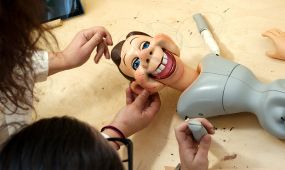 Stiamo padroneggiando la tecnica dell'intaglio a mano e la moderna tecnica della stampa 3D.Utilizziamo materiali e tecniche di prima qualità.Siamo in grado di comunicare con te quotidianamente durante il progetto per trovare il miglior modo possibile per realizzare le tue idee.
Stiamo padroneggiando la tecnica dell'intaglio a mano e la moderna tecnica della stampa 3D.Utilizziamo materiali e tecniche di prima qualità.Siamo in grado di comunicare con te quotidianamente durante il progetto per trovare il miglior modo possibile per realizzare le tue idee.
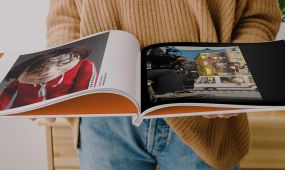 Un'ampia gamma di riviste e pubblicazioni è dedicata all'arte delle marionette. Queste pubblicazioni coprono vari aspetti dell'arte, dalla storia delle marionette in Repubblica Ceca alle pratiche contemporanee. Disponibili sia in formato cartaceo che digitale, offrono approfondimenti dettagliati sull'artigianato, la tradizione e la narrazione che definiscono quest'arte. Questa collezione è perfetta per appassionati, collezionisti o chiunque desideri esplorare il mondo delle marionette.
Un'ampia gamma di riviste e pubblicazioni è dedicata all'arte delle marionette. Queste pubblicazioni coprono vari aspetti dell'arte, dalla storia delle marionette in Repubblica Ceca alle pratiche contemporanee. Disponibili sia in formato cartaceo che digitale, offrono approfondimenti dettagliati sull'artigianato, la tradizione e la narrazione che definiscono quest'arte. Questa collezione è perfetta per appassionati, collezionisti o chiunque desideri esplorare il mondo delle marionette.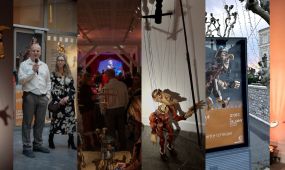 Marionettes.cz presenta una collezione contemporanea di marionette ceche
Le nostre marionette hanno conquistato con successo il pubblico in Francia! Invitate alla prestigiosa esposizione di Biarritz, una pittoresca città sulla costa sud-occidentale, abbiamo presentato con orgoglio una splendida collezione contemporanea di marionette ceche.
L’evento ha messo in mostra un’incredibile varietà di marionette, offrendo una gamma diversificata di tipologie, dimensioni e stili, fondendo magnificamente l’artigianato tradizionale con l’arte moderna.
Questa straordinaria opportunità ci ha permesso di rappresentare una delle più antiche e preziose tradizioni ceche su un palcoscenico internazionale. Le nostre marionette hanno incantato professionisti e appassionati d’arte e cultura, confermando il fascino globale della cultura ceca.
Il successo dell’esposizione testimonia la magia senza tempo del teatro delle marionette e la sua capacità di unire le persone attraverso la creatività e la tradizione. Siamo onorati di aver portato un pezzo del patrimonio ceco su una piattaforma così prestigiosa a Biarritz.
Marionettes.cz presenta una collezione contemporanea di marionette ceche
Le nostre marionette hanno conquistato con successo il pubblico in Francia! Invitate alla prestigiosa esposizione di Biarritz, una pittoresca città sulla costa sud-occidentale, abbiamo presentato con orgoglio una splendida collezione contemporanea di marionette ceche.
L’evento ha messo in mostra un’incredibile varietà di marionette, offrendo una gamma diversificata di tipologie, dimensioni e stili, fondendo magnificamente l’artigianato tradizionale con l’arte moderna.
Questa straordinaria opportunità ci ha permesso di rappresentare una delle più antiche e preziose tradizioni ceche su un palcoscenico internazionale. Le nostre marionette hanno incantato professionisti e appassionati d’arte e cultura, confermando il fascino globale della cultura ceca.
Il successo dell’esposizione testimonia la magia senza tempo del teatro delle marionette e la sua capacità di unire le persone attraverso la creatività e la tradizione. Siamo onorati di aver portato un pezzo del patrimonio ceco su una piattaforma così prestigiosa a Biarritz.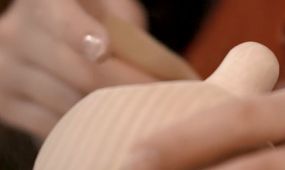 Crea le tue marionette. Sei abile e lo sappiamo! Assembla un burattino da un set pre-preparato. Parti per fare burattini. Prodotto in Repubblica Ceca. Materiali sicuri. Giocattoli in legno. Prodotto ceco di qualità.
Crea le tue marionette. Sei abile e lo sappiamo! Assembla un burattino da un set pre-preparato. Parti per fare burattini. Prodotto in Repubblica Ceca. Materiali sicuri. Giocattoli in legno. Prodotto ceco di qualità.
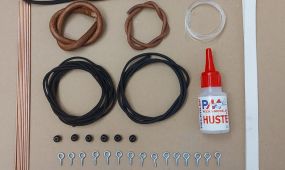 Siamo entusiasti di offrirti un'ampia gamma di materiali e accessori di alta qualità per realizzare le tue marionette! Che tu sia un professionista esperto o un hobbista alle prime armi, abbiamo tutto ciò di cui hai bisogno per dare vita alle tue marionette. La nostra selezione include legno di prima qualità, fili resistenti e durevoli, oltre a dettagliate componenti hardware, garantendo che le tue marionette siano funzionali e splendidamente fatte a mano. Ci impegniamo a offrirti prodotti che stimolino la tua creatività, assicurando al contempo che le tue creazioni siano costruite per durare. Qualunque sia il tuo progetto, siamo qui per supportarti in ogni fase!
Siamo entusiasti di offrirti un'ampia gamma di materiali e accessori di alta qualità per realizzare le tue marionette! Che tu sia un professionista esperto o un hobbista alle prime armi, abbiamo tutto ciò di cui hai bisogno per dare vita alle tue marionette. La nostra selezione include legno di prima qualità, fili resistenti e durevoli, oltre a dettagliate componenti hardware, garantendo che le tue marionette siano funzionali e splendidamente fatte a mano. Ci impegniamo a offrirti prodotti che stimolino la tua creatività, assicurando al contempo che le tue creazioni siano costruite per durare. Qualunque sia il tuo progetto, siamo qui per supportarti in ogni fase!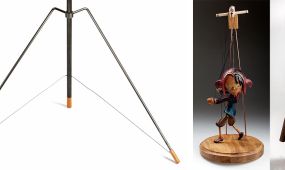 I supporti per marionette sono fondamentali nel mondo delle marionette ceche, poiché sostengono queste bellissime creazioni sia per l’esposizione che per le performance. Di solito realizzati in legno, i supporti sono progettati per mantenere la marionetta in posizione verticale, evitare l’intreccio dei fili e garantire movimenti fluidi durante gli spettacoli. Inoltre, valorizzano le marionette come opere d’arte decorative, riflettendo l’artigianato e la tradizione delle marionette ceche. Sia in teatro che in una collezione, i supporti preservano e mettono in risalto il fascino di questi tesori culturali.
I supporti per marionette sono fondamentali nel mondo delle marionette ceche, poiché sostengono queste bellissime creazioni sia per l’esposizione che per le performance. Di solito realizzati in legno, i supporti sono progettati per mantenere la marionetta in posizione verticale, evitare l’intreccio dei fili e garantire movimenti fluidi durante gli spettacoli. Inoltre, valorizzano le marionette come opere d’arte decorative, riflettendo l’artigianato e la tradizione delle marionette ceche. Sia in teatro che in una collezione, i supporti preservano e mettono in risalto il fascino di questi tesori culturali.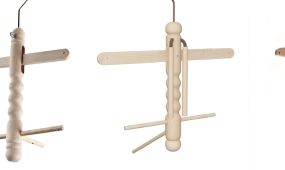 I nostri controller per marionette sono progettati per offrire una manipolazione precisa e senza sforzo, sia per principianti che per professionisti. Realizzati in legno e metallo di alta qualità, forniscono un eccellente equilibrio e controllo, rendendo le tue marionette più vive. Che tu voglia creare gesti sottili o movimenti complessi, la nostra gamma include dai semplici modelli a croce ai sistemi avanzati, ideali per qualsiasi livello di abilità. Con i nostri controller, potrai godere di movimenti fluidi e naturali che migliorano l'arte della marionetta.
I nostri controller per marionette sono progettati per offrire una manipolazione precisa e senza sforzo, sia per principianti che per professionisti. Realizzati in legno e metallo di alta qualità, forniscono un eccellente equilibrio e controllo, rendendo le tue marionette più vive. Che tu voglia creare gesti sottili o movimenti complessi, la nostra gamma include dai semplici modelli a croce ai sistemi avanzati, ideali per qualsiasi livello di abilità. Con i nostri controller, potrai godere di movimenti fluidi e naturali che migliorano l'arte della marionetta.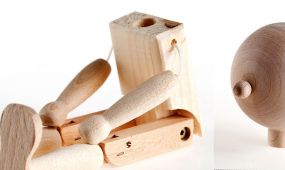 Nella nostra pagina Corpi e teste, parti di marionette e scarpe, offriamo una varietà di componenti di alta qualità per creare o personalizzare le tue marionette. La nostra selezione comprende teste finemente lavorate, corpi completi e scarpe dettagliate, disponibili in diverse dimensioni e stili per adattarsi al carattere della tua marionetta. Che tu stia assemblando una nuova marionetta o dando un nuovo look a una esistente, questi pezzi garantiscono durata e dettagli artistici, facendo risaltare le tue creazioni.
Nella nostra pagina Corpi e teste, parti di marionette e scarpe, offriamo una varietà di componenti di alta qualità per creare o personalizzare le tue marionette. La nostra selezione comprende teste finemente lavorate, corpi completi e scarpe dettagliate, disponibili in diverse dimensioni e stili per adattarsi al carattere della tua marionetta. Che tu stia assemblando una nuova marionetta o dando un nuovo look a una esistente, questi pezzi garantiscono durata e dettagli artistici, facendo risaltare le tue creazioni.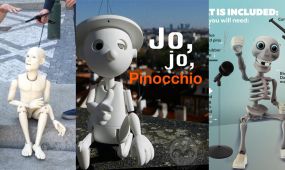 Qui abbiamo il nostro database di burattini marionette animali pronti per la stampa con stampanti 3D. Possiamo anche personalizzare i file in base alle tue esigenze. La licenza per ogni file consente di stampare fino a 5 pezzi.
Si prega di notare che il prezzo del tuo ordine include solo un file elettronico con il modello 3D (* .stl). La stampa della tua marionetta dipende da te :)Godere!
Qui abbiamo il nostro database di burattini marionette animali pronti per la stampa con stampanti 3D. Possiamo anche personalizzare i file in base alle tue esigenze. La licenza per ogni file consente di stampare fino a 5 pezzi.
Si prega di notare che il prezzo del tuo ordine include solo un file elettronico con il modello 3D (* .stl). La stampa della tua marionetta dipende da te :)Godere!
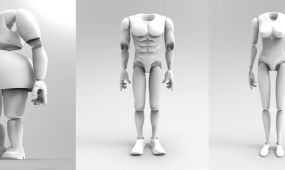 In questa categoria troverai una varietà di modelli 3D di corpi di marionette, pronti a costituire la base del tuo pupazzo. Da semplici strutture di base a modelli più dettagliati, questi file forniscono la struttura essenziale su cui puoi costruire il carattere, la personalità e il movimento. Sia che tu stia creando una marionetta tradizionale o sperimentando un tocco moderno, i nostri modelli ti offrono un solido punto di partenza.
Tutti i file sono forniti in formato *.stl e preparati con cura per una stampa 3D e un assemblaggio semplici. Il tuo ordine include solo il file digitale: la stampa, la finitura e la realizzazione della tua marionetta sono nelle tue mani. Divertiti a modellare i tuoi pupazzi unici, partendo dal corpo!
In questa categoria troverai una varietà di modelli 3D di corpi di marionette, pronti a costituire la base del tuo pupazzo. Da semplici strutture di base a modelli più dettagliati, questi file forniscono la struttura essenziale su cui puoi costruire il carattere, la personalità e il movimento. Sia che tu stia creando una marionetta tradizionale o sperimentando un tocco moderno, i nostri modelli ti offrono un solido punto di partenza.
Tutti i file sono forniti in formato *.stl e preparati con cura per una stampa 3D e un assemblaggio semplici. Il tuo ordine include solo il file digitale: la stampa, la finitura e la realizzazione della tua marionetta sono nelle tue mani. Divertiti a modellare i tuoi pupazzi unici, partendo dal corpo!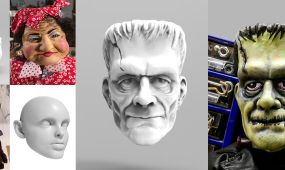 Qui abbiamo il nostro database di teste di marionette pronte per la stampa con stampanti 3D. Possiamo anche personalizzare i file in base alle tue esigenze. Tieni presente che il prezzo del tuo ordine include solo un file elettronico con il modello 3D (*.stl). La stampa della tua marionetta è a carico tuo :)Divertiti!
Qui abbiamo il nostro database di teste di marionette pronte per la stampa con stampanti 3D. Possiamo anche personalizzare i file in base alle tue esigenze. Tieni presente che il prezzo del tuo ordine include solo un file elettronico con il modello 3D (*.stl). La stampa della tua marionetta è a carico tuo :)Divertiti!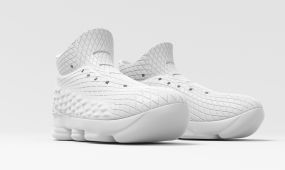 Qui puoi esplorare la nostra collezione di modelli 3D di calzature e accessori per marionette, pronti a dare un tocco di dettaglio e carattere in più alle tue creazioni. Dalle casual Converse alle eleganti scarpe lucide o alle sportive sneakers da basket, troverai modelli adatti a una vasta gamma di personalità dei pupazzi.
Ogni file è in formato *.stl, preparato per una stampa 3D fluida e una facile integrazione con i tuoi progetti di marionette. I modelli sono progettati con cura per bilanciare l'estetica con la praticità, rendendoli sia eleganti che funzionali. Se hai bisogno di qualcosa di speciale, possiamo anche creare disegni personalizzati per soddisfare la tua visione. Si prega di notare che l'acquisto fornisce solo il file digitale: la stampa e l'assemblaggio delle scarpe e degli accessori della tua marionetta dipendono da te.
Qui puoi esplorare la nostra collezione di modelli 3D di calzature e accessori per marionette, pronti a dare un tocco di dettaglio e carattere in più alle tue creazioni. Dalle casual Converse alle eleganti scarpe lucide o alle sportive sneakers da basket, troverai modelli adatti a una vasta gamma di personalità dei pupazzi.
Ogni file è in formato *.stl, preparato per una stampa 3D fluida e una facile integrazione con i tuoi progetti di marionette. I modelli sono progettati con cura per bilanciare l'estetica con la praticità, rendendoli sia eleganti che funzionali. Se hai bisogno di qualcosa di speciale, possiamo anche creare disegni personalizzati per soddisfare la tua visione. Si prega di notare che l'acquisto fornisce solo il file digitale: la stampa e l'assemblaggio delle scarpe e degli accessori della tua marionetta dipendono da te.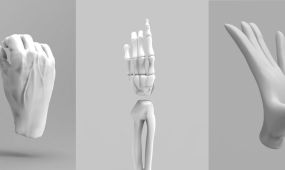 Scopri la nostra collezione di mani di marionette stampabili in 3D, progettate per dare personalità ed espressività ai tuoi pupazzi. Le mani sono un dettaglio essenziale nella creazione di pupazzi, sia che tu stia cercando un look teatrale classico, un personaggio giocoso o un design più realistico. Il nostro database offre modelli pronti per la stampa che puoi facilmente incorporare nei tuoi progetti di marionette, rendendo semplice aggiungere quel tocco finale di artigianalità.
Tutti i file sono forniti in formato *.stl, preparati e ottimizzati per la stampa 3D. Ogni design è accuratamente modellato per garantire equilibrio, proporzione e facilità d'uso nell'assemblaggio. Se stai cercando qualcosa di speciale, possiamo anche personalizzare le mani in base alla tua visione. Ti preghiamo di notare che il tuo acquisto include solo il file digitale: la stampa e la finitura della tua marionetta sono una parte creativa che lasciamo a te. Divertiti a dare vita al tuo pupazzo!
Scopri la nostra collezione di mani di marionette stampabili in 3D, progettate per dare personalità ed espressività ai tuoi pupazzi. Le mani sono un dettaglio essenziale nella creazione di pupazzi, sia che tu stia cercando un look teatrale classico, un personaggio giocoso o un design più realistico. Il nostro database offre modelli pronti per la stampa che puoi facilmente incorporare nei tuoi progetti di marionette, rendendo semplice aggiungere quel tocco finale di artigianalità.
Tutti i file sono forniti in formato *.stl, preparati e ottimizzati per la stampa 3D. Ogni design è accuratamente modellato per garantire equilibrio, proporzione e facilità d'uso nell'assemblaggio. Se stai cercando qualcosa di speciale, possiamo anche personalizzare le mani in base alla tua visione. Ti preghiamo di notare che il tuo acquisto include solo il file digitale: la stampa e la finitura della tua marionetta sono una parte creativa che lasciamo a te. Divertiti a dare vita al tuo pupazzo!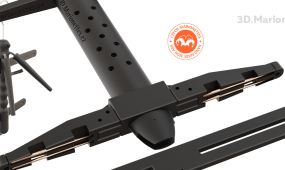 In questa categoria troverai una raccolta di file stampabili in 3D dedicati ai controller per marionette e ai meccanismi oculari. Questi componenti essenziali danno vita ai tuoi pupazzi: i controller ti consentono di ottenere movimenti e espressioni precisi, mentre i meccanismi oculari aggiungono un affascinante tocco di realismo e carattere. Che siate burattinai, hobbisti o creatori professionisti, i nostri progetti sono pronti per essere scaricati e stampati, rendendo più facile che mai costruire o personalizzare la vostra marionetta.
Tutti i file sono forniti nel formato standard *.stl e ottimizzati per la stampa 3D. Ogni progetto è stato accuratamente preparato per bilanciare funzionalità e facilità di assemblaggio, in modo che tu possa concentrarti sulla parte creativa della realizzazione dei tuoi pupazzi. Offriamo anche la personalizzazione dei modelli in base alle tue esigenze specifiche. Tieni presente che il tuo acquisto include solo il file digitale: la stampa e l'assemblaggio dei pezzi del tuo pupazzo fanno parte del tuo percorso creativo.
In questa categoria troverai una raccolta di file stampabili in 3D dedicati ai controller per marionette e ai meccanismi oculari. Questi componenti essenziali danno vita ai tuoi pupazzi: i controller ti consentono di ottenere movimenti e espressioni precisi, mentre i meccanismi oculari aggiungono un affascinante tocco di realismo e carattere. Che siate burattinai, hobbisti o creatori professionisti, i nostri progetti sono pronti per essere scaricati e stampati, rendendo più facile che mai costruire o personalizzare la vostra marionetta.
Tutti i file sono forniti nel formato standard *.stl e ottimizzati per la stampa 3D. Ogni progetto è stato accuratamente preparato per bilanciare funzionalità e facilità di assemblaggio, in modo che tu possa concentrarti sulla parte creativa della realizzazione dei tuoi pupazzi. Offriamo anche la personalizzazione dei modelli in base alle tue esigenze specifiche. Tieni presente che il tuo acquisto include solo il file digitale: la stampa e l'assemblaggio dei pezzi del tuo pupazzo fanno parte del tuo percorso creativo.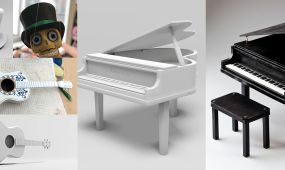 In questa categoria troverai una serie di oggetti di scena diversi nei modelli 3D. Ora puoi stampare oggetti di scena di chitarra, pianoforte e altri strumenti musicali su una stampante 3D.
In questa categoria troverai una serie di oggetti di scena diversi nei modelli 3D. Ora puoi stampare oggetti di scena di chitarra, pianoforte e altri strumenti musicali su una stampante 3D.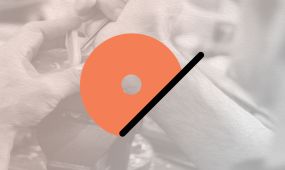 Trasforma il legno in un burattino secondo la tua immaginazione. Sono la nostra fantasia e la nostra energia a trasformare un pezzo di legno in un burattino. Il legno ha una propria struttura, che guida il nostro scalpello. Se siamo attenti e aperti all’improvvisazione, anche un taglio casuale può ispirarci su dove andare dopo nella ricerca della sua forma ed espressione. Poi, attraverso di esso, possiamo raccontare storie...
Trasforma il legno in un burattino secondo la tua immaginazione. Sono la nostra fantasia e la nostra energia a trasformare un pezzo di legno in un burattino. Il legno ha una propria struttura, che guida il nostro scalpello. Se siamo attenti e aperti all’improvvisazione, anche un taglio casuale può ispirarci su dove andare dopo nella ricerca della sua forma ed espressione. Poi, attraverso di esso, possiamo raccontare storie...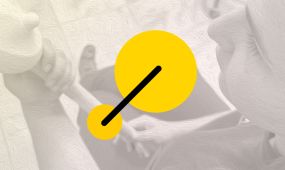 Ti spiegheremo come usare le marionette come strumento terapeutico efficace. Scopri come stiamo sviluppando una metodologia per insegnare questo fenomeno. Unisciti al progetto globale e scopri i corsi che offriamo.
Ti spiegheremo come usare le marionette come strumento terapeutico efficace. Scopri come stiamo sviluppando una metodologia per insegnare questo fenomeno. Unisciti al progetto globale e scopri i corsi che offriamo.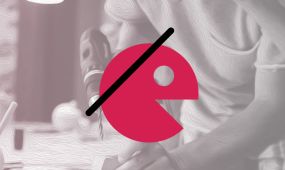 Impara ad assemblare e decorare la tua marionetta di legno sotto la guida dei nostri burattinai e insegnanti esperti. Puoi scegliere tra corsi semplici o più avanzati. Prova la gioia di costruire la tua marionetta.
Collega bellezza e funzione. Realtà e immaginazione. Materia e spirito. Burattinaio e burattinaio. I vecchi burattinai dicevano sempre "Una marionetta deve essere fatta per essere bella e per interpretare se stessa", e aggiungerei solo che questo è un compito pieno di molti mestieri.
Petr Puppeteer Senior Puppet Technologist – PUP
Impara ad assemblare e decorare la tua marionetta di legno sotto la guida dei nostri burattinai e insegnanti esperti. Puoi scegliere tra corsi semplici o più avanzati. Prova la gioia di costruire la tua marionetta.
Collega bellezza e funzione. Realtà e immaginazione. Materia e spirito. Burattinaio e burattinaio. I vecchi burattinai dicevano sempre "Una marionetta deve essere fatta per essere bella e per interpretare se stessa", e aggiungerei solo che questo è un compito pieno di molti mestieri.
Petr Puppeteer Senior Puppet Technologist – PUP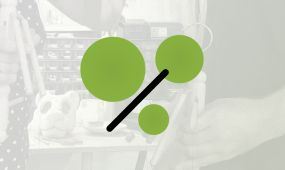 Qui troverai corsi sulle regole e le tecniche per liberare la tua espressione creativa con le marionette. Una marionetta è come uno scudo dietro cui nascondersi, dandoti la libertà di dire e fare tutto ciò che senti e desideri. Ti insegneremo la tecnica per operare e animare le marionette.
Qui troverai corsi sulle regole e le tecniche per liberare la tua espressione creativa con le marionette. Una marionetta è come uno scudo dietro cui nascondersi, dandoti la libertà di dire e fare tutto ciò che senti e desideri. Ti insegneremo la tecnica per operare e animare le marionette.
